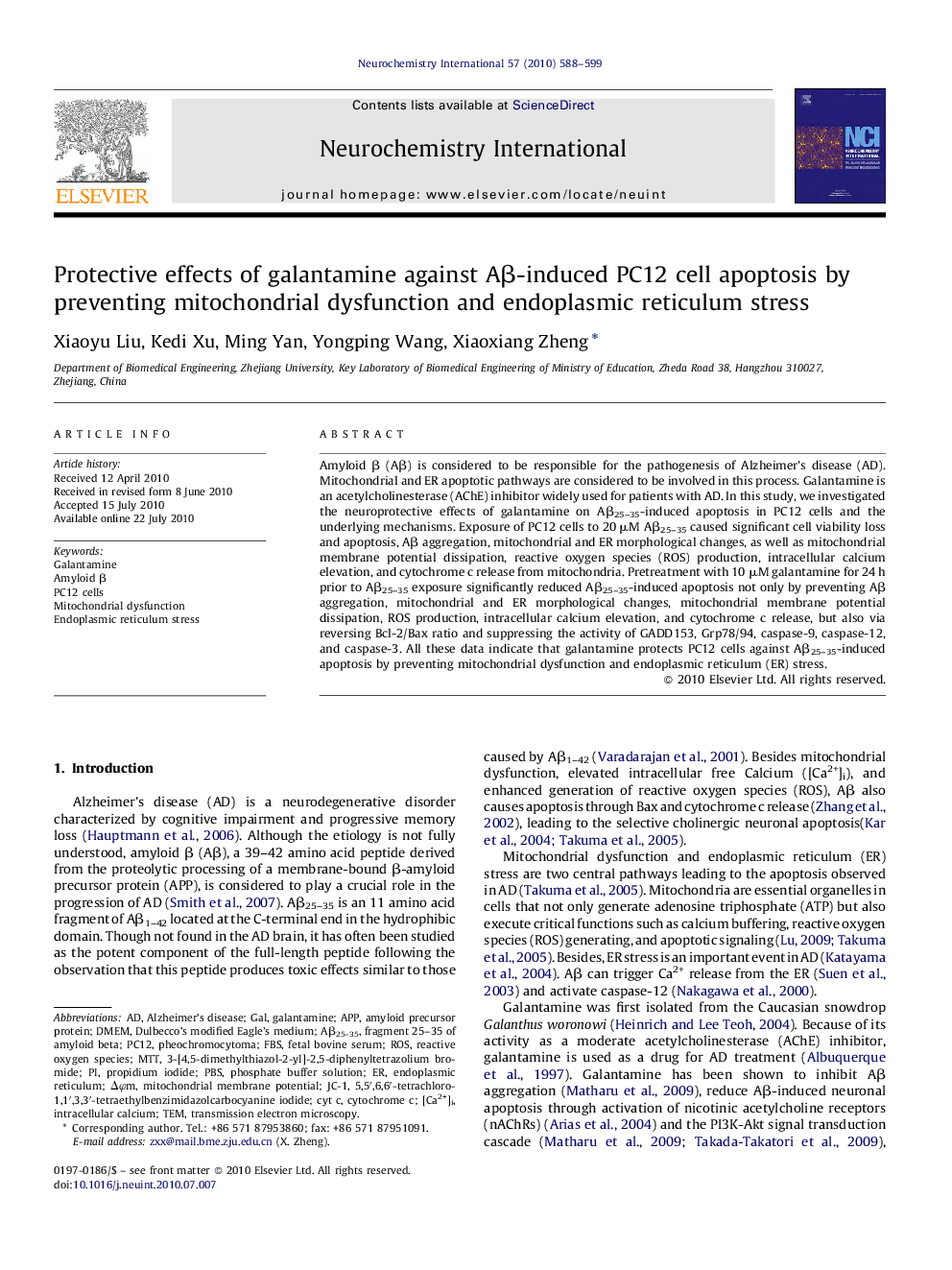| Article ID | Journal | Published Year | Pages | File Type |
|---|---|---|---|---|
| 10958384 | Neurochemistry International | 2010 | 12 Pages |
Abstract
Amyloid β (Aβ) is considered to be responsible for the pathogenesis of Alzheimer's disease (AD). Mitochondrial and ER apoptotic pathways are considered to be involved in this process. Galantamine is an acetylcholinesterase (AChE) inhibitor widely used for patients with AD. In this study, we investigated the neuroprotective effects of galantamine on Aβ25-35-induced apoptosis in PC12 cells and the underlying mechanisms. Exposure of PC12 cells to 20 μM Aβ25-35 caused significant cell viability loss and apoptosis, Aβ aggregation, mitochondrial and ER morphological changes, as well as mitochondrial membrane potential dissipation, reactive oxygen species (ROS) production, intracellular calcium elevation, and cytochrome c release from mitochondria. Pretreatment with 10 μM galantamine for 24 h prior to Aβ25-35 exposure significantly reduced Aβ25-35-induced apoptosis not only by preventing Aβ aggregation, mitochondrial and ER morphological changes, mitochondrial membrane potential dissipation, ROS production, intracellular calcium elevation, and cytochrome c release, but also via reversing Bcl-2/Bax ratio and suppressing the activity of GADD153, Grp78/94, caspase-9, caspase-12, and caspase-3. All these data indicate that galantamine protects PC12 cells against Aβ25-35-induced apoptosis by preventing mitochondrial dysfunction and endoplasmic reticulum (ER) stress.
Keywords
PBS5,5′,6,6′-tetrachloro-1,1′,3,3′-tetraethylbenzimidazolcarbocyanine iodidePC12DMEMJC-1FBSCyt CAPP3-[4,5-dimethylthiazol-2-yl]-2,5-diphenyltetrazolium bromideAβ25–35Dulbecco's modified Eagle's mediumMTTROS[Ca2+]iamyloid βMitochondrial dysfunctionEndoplasmic reticulum stressTemAlzheimer's diseasefetal bovine serumPC12 cellscytochrome cendoplasmic reticulumPheochromocytomaphosphate buffer solutionTransmission electron microscopyMitochondrial membrane potentialamyloid precursor proteinPropidium iodideIntracellular calciumGalGalantamineReactive oxygen species
Related Topics
Life Sciences
Biochemistry, Genetics and Molecular Biology
Cell Biology
Authors
Xiaoyu Liu, Kedi Xu, Ming Yan, Yongping Wang, Xiaoxiang Zheng,
